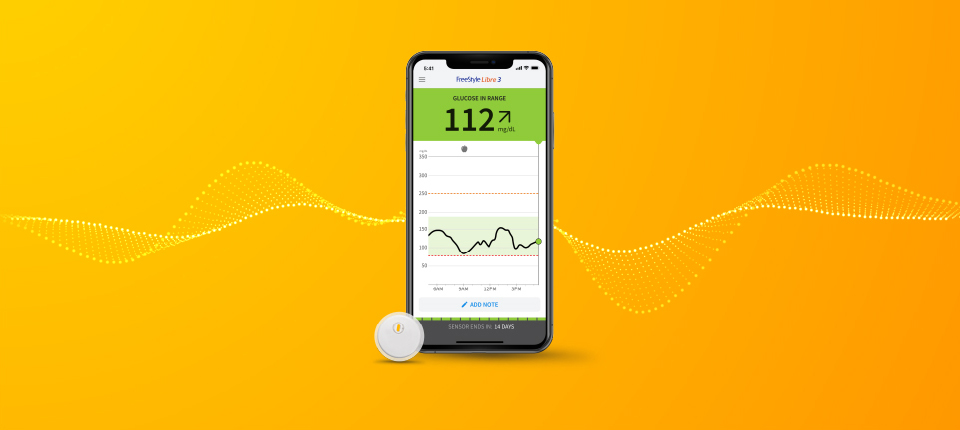Think of all those times you've thought, "If I only knew then what I know now..."
To have the technology that allowed for better decisions based on more information received before additional damage was done.
But instead of just being able to go back in time to rethink that decision to share the bachelor party story during the wedding toast, the stakes were raised and one’s heart health was able to be put in better focus.
That would be potentially life-changing technology to have.
Welcome to the CardioMEMSTM HF System and its new expanded indication.
A Little Background...
The CardioMEMS HF System – a tiny device about the size of a small paperclip – monitors for pressure changes within the pulmonary artery, which can indicate worsening heart failure (and wirelessly transmits data regarding those pressure changes to a clinical team), even before patients feel or experience physical symptoms.
It is that early identification that is the key, according to Dr. Philip B. Adamson, divisional vice president and chief medical officer of Abbott's heart failure business. "What happens when people get sick and have to go to the hospital is a process. It can start long before they develop symptoms, and it progresses without them even knowing there is a problem. And that itself is the problem. Those weeks undetected cause a progression of their disease.
"In the time it takes for the symptoms to appear, decompensation occurs and this process, especially repeated decompensations over time, increases the damage to the heart. This is why it is so important for us to identify this situation as early as possible, before the patient needs rescue therapies."
The Role of the CardioMEMS HF System
"We knew that damage was being done while patients were progressing through the vast majority of the decompensation process," Adamson said. "Most monitoring efforts had been based on patient self-reporting that they felt bad, they had a change in body weight or another parameter like a physical exam. Unfortunately, during most of the decompensation process, the patient doesn't have identifiable symptoms, so even if you saw them in a clinic you wouldn't be able to see that their heart failure was worsening.
"For a long time, we've needed the ability to see inside the body’s system and understand what the body sees, what changes are leading to worsening heart failure. We learned years ago that pulmonary artery pressure is the first detectable change as one goes from stable to unstable and that happens roughly three weeks before people develop symptoms, which usually makes them come to the hospital," Adamson said. "We subsequently discovered that blood pressures in the lung circulation measured by an implantable device offered the highest quality management data that could be obtained clinically. That's where CardioMEMS comes in."
The Significance of the New CardioMEMS HF System Indication
The importance of early detection is, of course, a primary tenant of modern medical science. Whether it is confirming a child has diabetes before unchecked damage is done to her system or finding an asymptomatic tumor before it metastasizes to additional organs, the key to the most effective treatment is early diagnosis and intervention.
The same is true of cardiac disease but, historically, evaluating a patient's condition has been focused on how they feel at the time.
"When cardiologists think of heart failure, we think of symptoms. We stage the disease using the NYHA (New York Heart Association) Functional Classification, Class I, II, III and IV, which focuses on symptoms. However, we don't do that with cancer, which may not have any symptoms until the disease is quite progressed. Heart failure has a much higher mortality rate than just about any cancer and yet we generally wait for symptoms to appear to trigger life-changing interventions.
"With CardioMEMS, we now have a management and measurement tool for heart failure that gives us an insight into the disease that we have never had. With the FDA's new indication, the device is now indicated for wirelessly measuring and monitoring pulmonary artery pressure and heart rate in NYHA Class II or III patients who either have been hospitalized in the past year or have elevated natriuretic peptides."
Bringing Clarity to the Heart
"With the new indication, people who have not been hospitalized, but have this blood biomarker that shows elevated stress on the heart, are now eligible for CardioMEMS because the device gives a very clear signal to help lower the heart’s stress with daily checks," said Dr. Adamson. "This is true even if they don't have a lot of symptoms. In this way, we are not allowing the disease to progress unchecked to the point where these irreversible symptoms impact negatively on their lives.
"CardioMEMS allows for more accurate staging of the heart disease. We now understand that even when examining people who are feeling reasonably well – when you 'look under the hood’ at what is actually happening in their hearts –we may see a picture much different than we expected. We no longer have to wait for symptoms to develop which can be very late and discordant with the severity of the underlying disease."
Dr. Adamson suggests that using the CardioMEMS HF System in people with earlier-stage (Class II) heart failure brings clarity that cardiologists have not had before. "It's really the story of two treatment paradigms: Are you making treatment decisions based on self-reported symptoms alone or are you making treatment decisions that are also based on objective data regarding their pressure?"
More People. More Options. More Time.
With the new indication allowing for earlier use of the CardioMEMS HF System in the staging process, an additional 1.2 million patients in the U.S. are now eligible for the device. This number is expected to increase substantially as the number of older Americans, as well as those with heart disease, rises.
The expanded indication was supported by data from the Guide-HF clinical trial. Based on study data adjusted for the impact of COVID-19, it demonstrated that patients with earlier-stage (Class II) heart failure have fewer hospitalizations when their therapy is guided by pulmonary pressure monitoring like that provided by the CardioMEMS HF System. "This new indication means more people will be helped right away and even more over time," said Dr. Adamson. "Before, with the severity of the disease increasing before symptoms caught up, we were closing the barn door after the horses were out. We can now keep patients at home and out of the hospital."
Is the CardioMEMS ™ PA Sensor a paperclip-sized time machine? Certainly not in the sense we are used to seeing in movies. It won't impact the present or future through the Butterfly Effect or risk the possibility of numerous historical timelines colliding. Which is for the best.
However, it will provide cardiologists a view of what in the past they could not see until it was too late.
And if there is one aspect of medical care that all should be able to agree on, it's that the earlier we know, the more options are available.
Indications and Important Safety Information:
Visit CardioMEMS HF System for U.S. important safety information.






FOLLOW ABBOTT